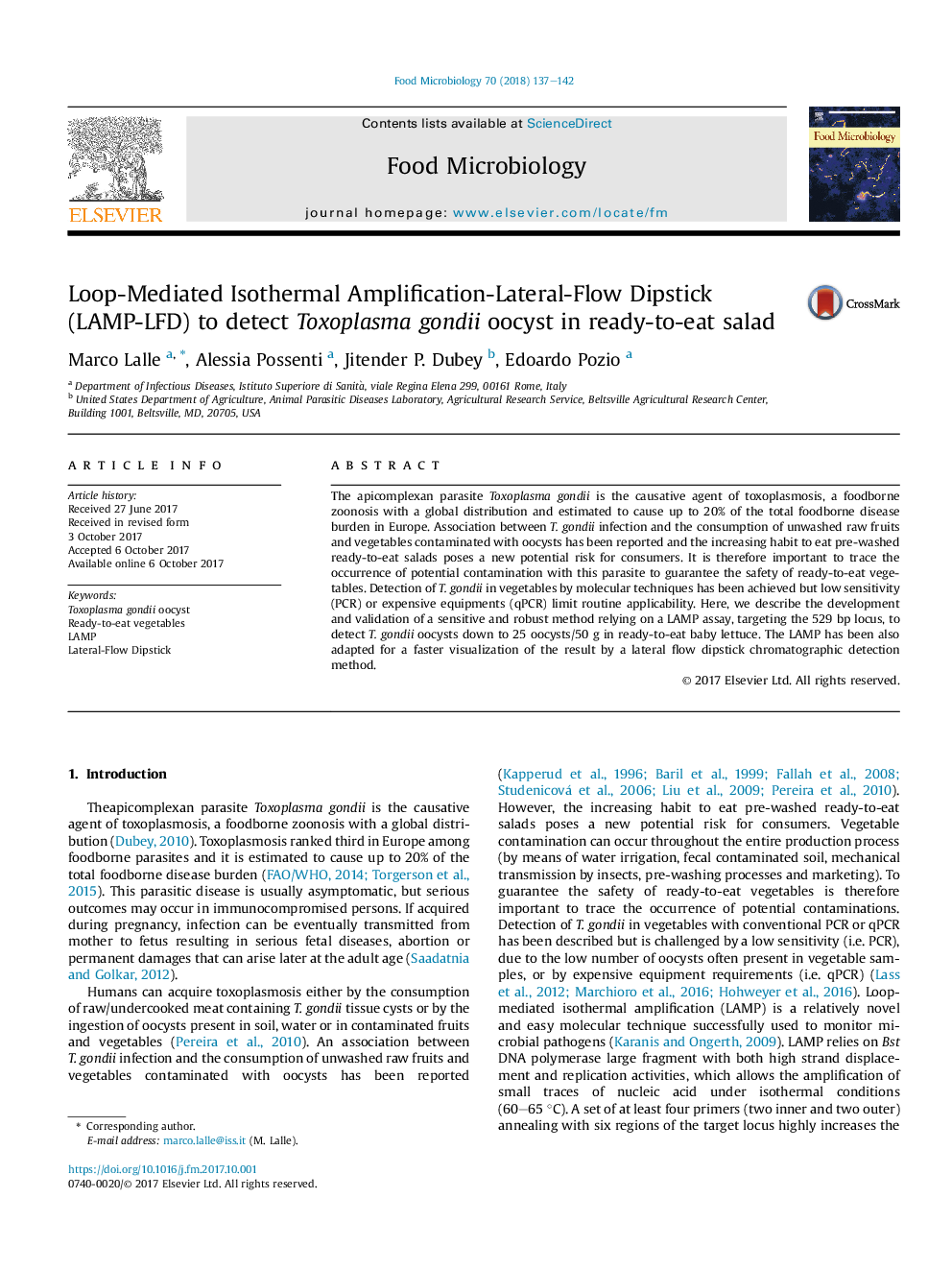| Article ID | Journal | Published Year | Pages | File Type |
|---|---|---|---|---|
| 5740015 | Food Microbiology | 2018 | 6 Pages |
â¢T. gondii oocysts can be detected by a LAMP assay in ready-to-eat vegetables.â¢LAMP detection of T. gondii in vegetables is sensitive as qPCR.â¢T. gondii LAMP products can be visualized by a LFD assay.
The apicomplexan parasite Toxoplasma gondii is the causative agent of toxoplasmosis, a foodborne zoonosis with a global distribution and estimated to cause up to 20% of the total foodborne disease burden in Europe. Association between T. gondii infection and the consumption of unwashed raw fruits and vegetables contaminated with oocysts has been reported and the increasing habit to eat pre-washed ready-to-eat salads poses a new potential risk for consumers. It is therefore important to trace the occurrence of potential contamination with this parasite to guarantee the safety of ready-to-eat vegetables. Detection of T. gondii in vegetables by molecular techniques has been achieved but low sensitivity (PCR) or expensive equipments (qPCR) limit routine applicability. Here, we describe the development and validation of a sensitive and robust method relying on a LAMP assay, targeting the 529 bp locus, to detect T. gondii oocysts down to 25 oocysts/50 g in ready-to-eat baby lettuce. The LAMP has been also adapted for a faster visualization of the result by a lateral flow dipstick chromatographic detection method.
Graphical abstractDownload high-res image (173KB)Download full-size image
